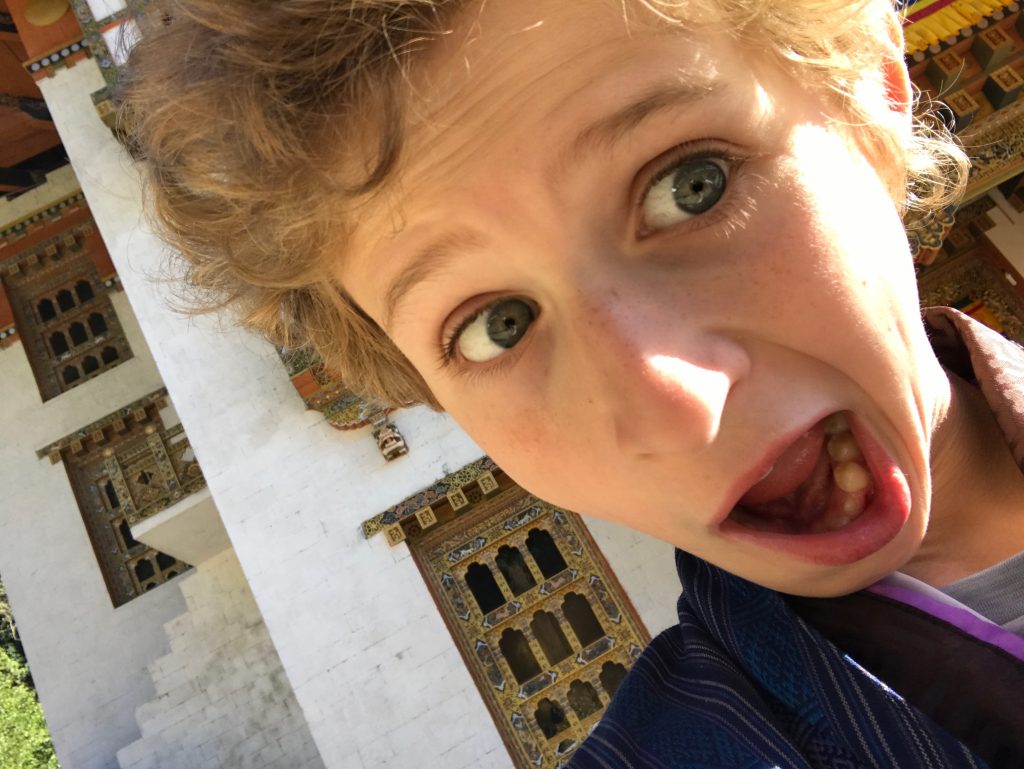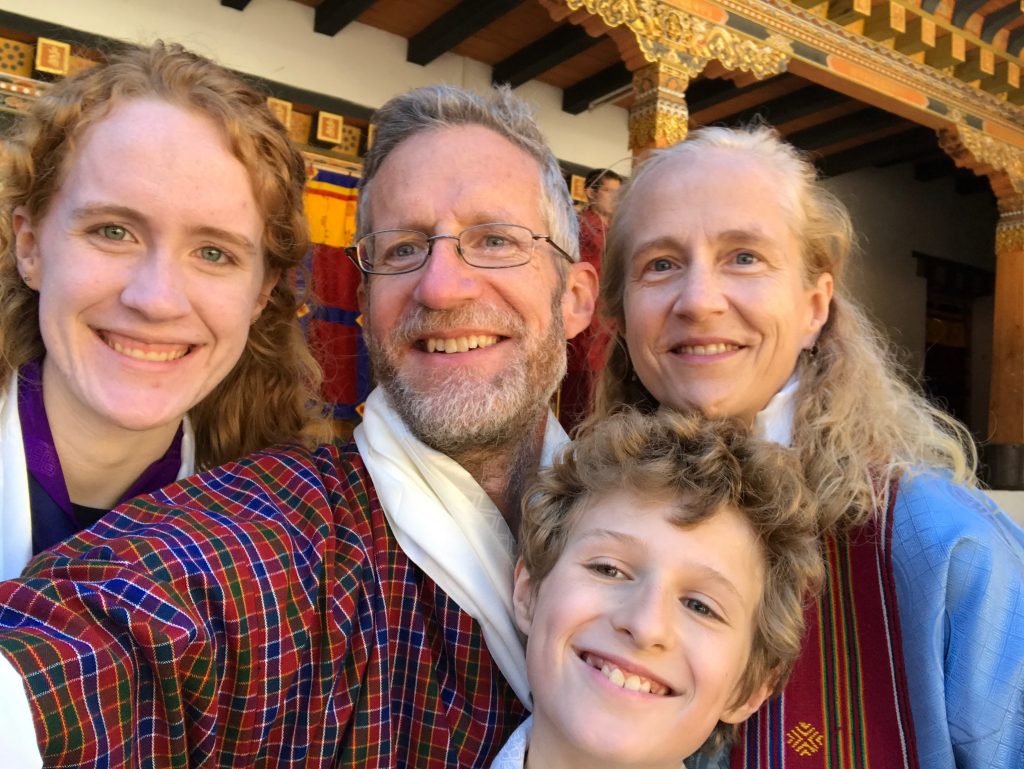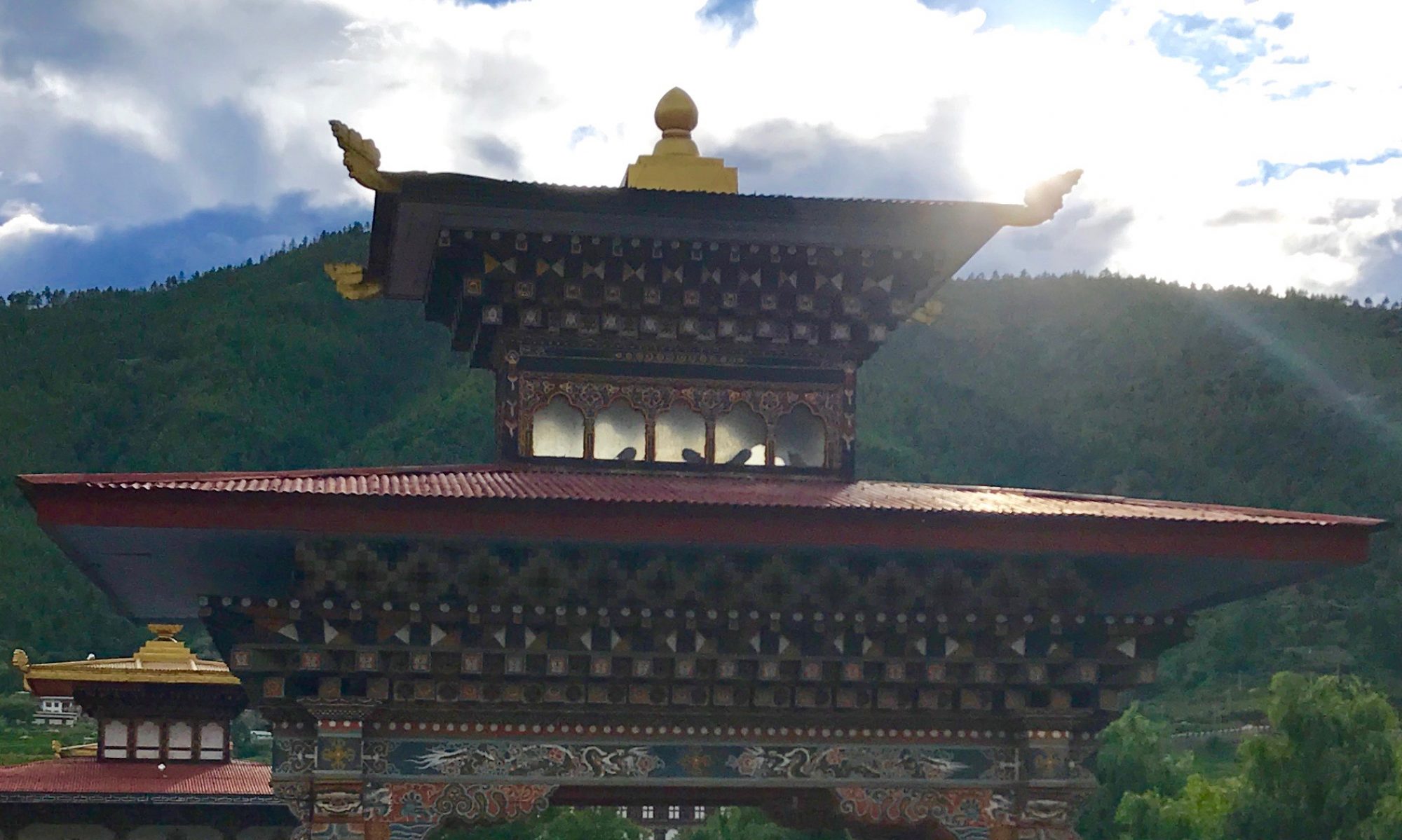November 11th is the 4th King’s birthday, and Sherubtse College began the morning with a small celebration in the college temple (or Zangto Pelri, the paradise visualized by Guru Rinpoche).
We tried to chant along in Dzongkha, a little like trying to follow a Latin Mass. Then, after some rice and butter tea for all, we piled into buses and private vehicles and drove over to Barshong. The Sherubtse faculty were offering lunch to the monks during the ongoing puja (ritual) there.
I think the ritual in this case is a drubchen (like the ceremony James attended at Yonphula): a religious ritual working to clear away negative energy and obstacles on behalf of all sentient beings.
The ceremony has been going on for days, but many people are attending this day (a Saturday and the king’s birthday, so a double holiday).
The temple, draped and decorated, looks different than the foggy place we visited two weeks ago:
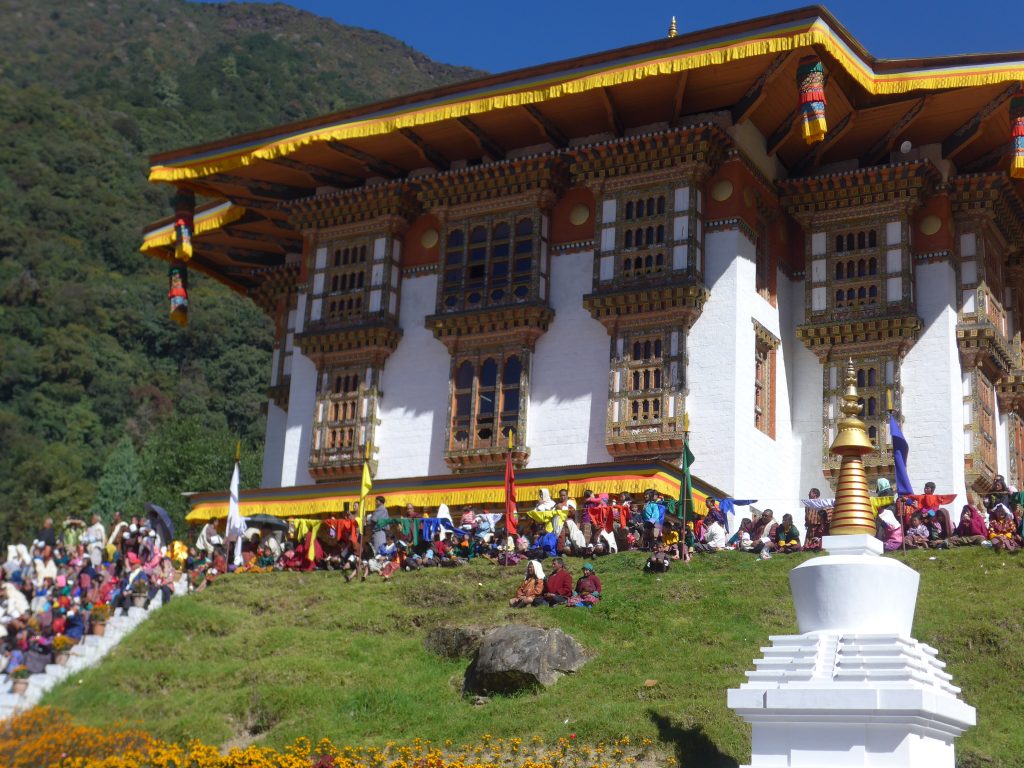
As we arrived, the local scouts were dancing, but almost as soon as we arrived at the top of the steps near the temple, the masked dances began.
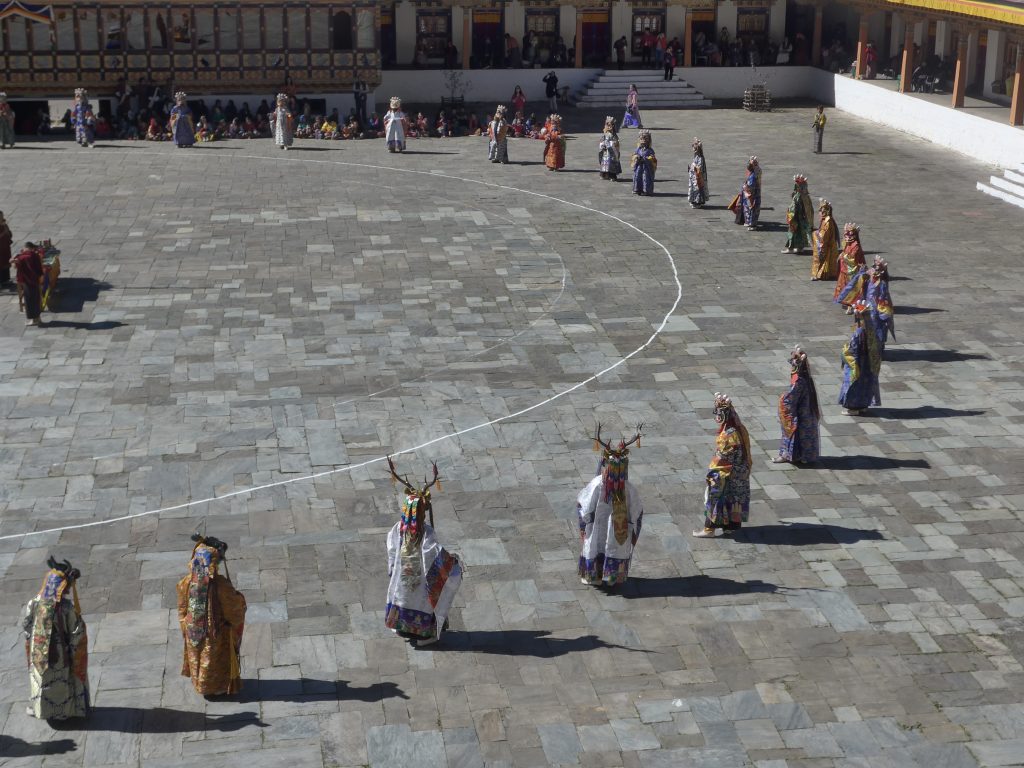
The first dance seemed to be a “clearing the ground” process: a huge number of masked dancers came and moved slowly, spinning periodically, in a large circle around the stone courtyard. (At the center was a bamboo sculpture and ritual cakes or torma, into which negative spirits had been invited.) At a certain point, the dancers broke into two lines that moved up the center of the courtyard and then divided to circle outward again.
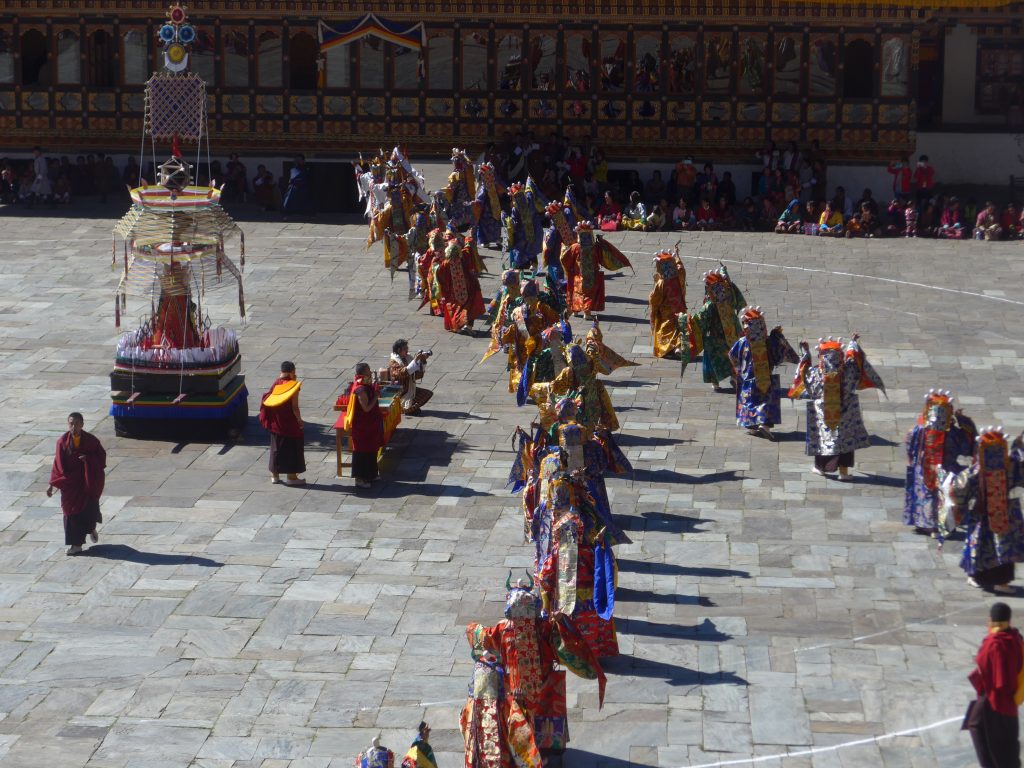
By the end of the dance, the monks were clearly exhausted.
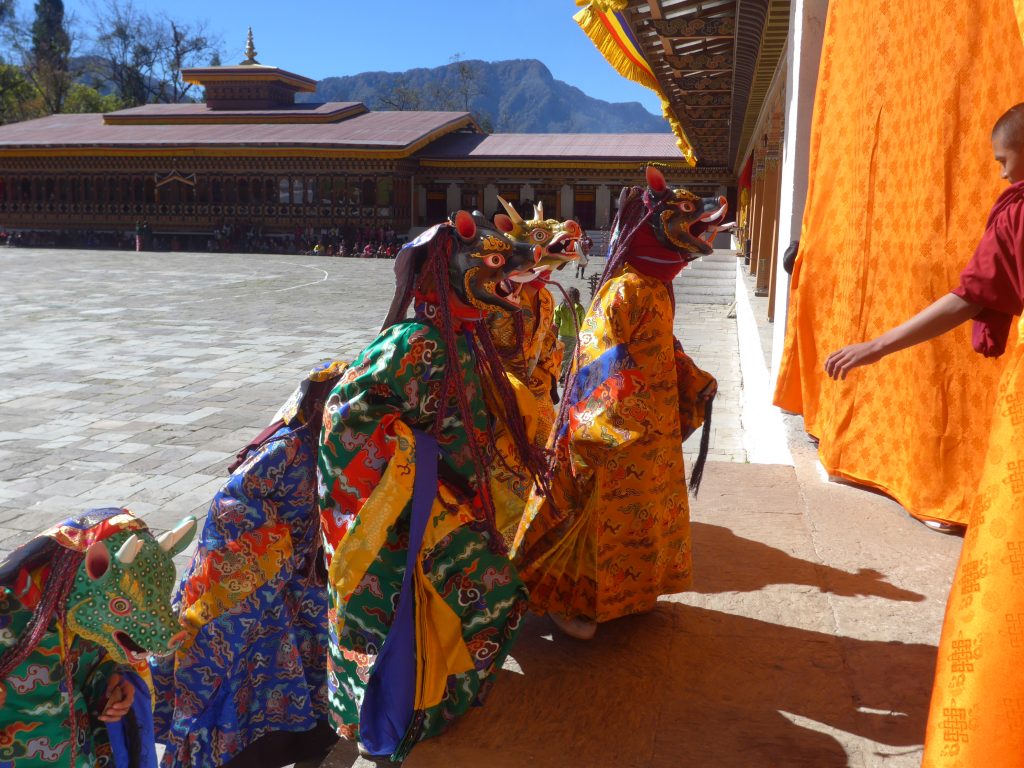
There was a break for lunch during which many people went to see the thongdrel (an immense image of holy figures and lineages). The name “thongdrel” means “liberates by sight,” and the idea is that just by seeing the thongdrel, people can win free from the cycle of suffering and reincarnation. I just wish we could find people to explain the imagery to us.
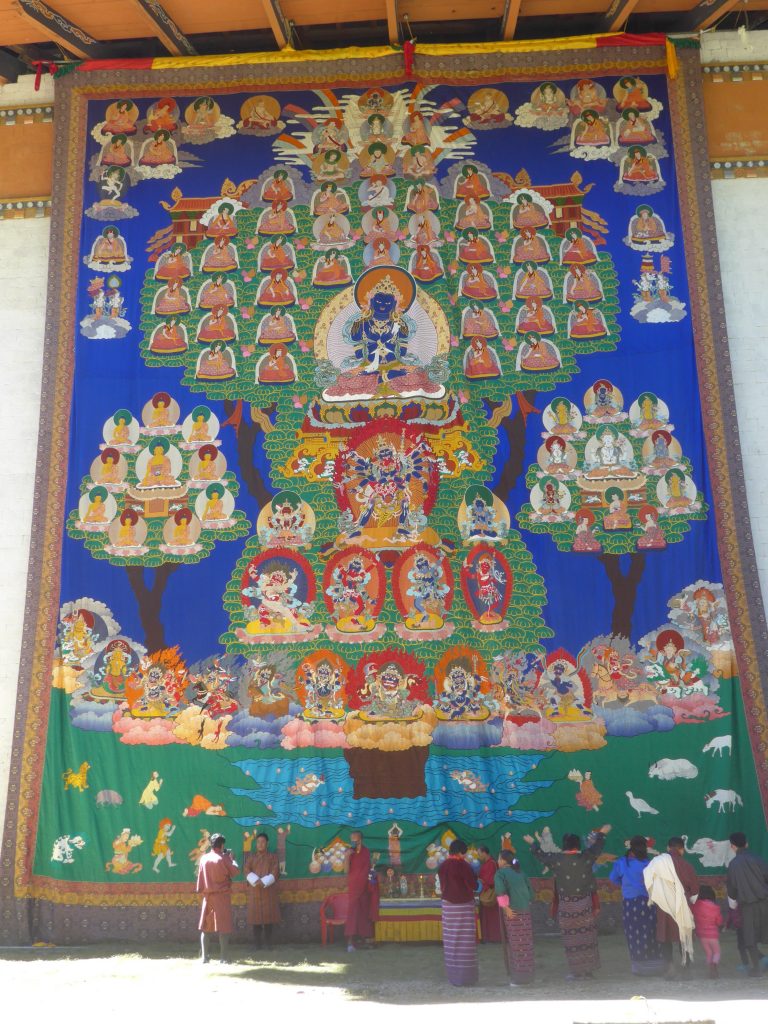
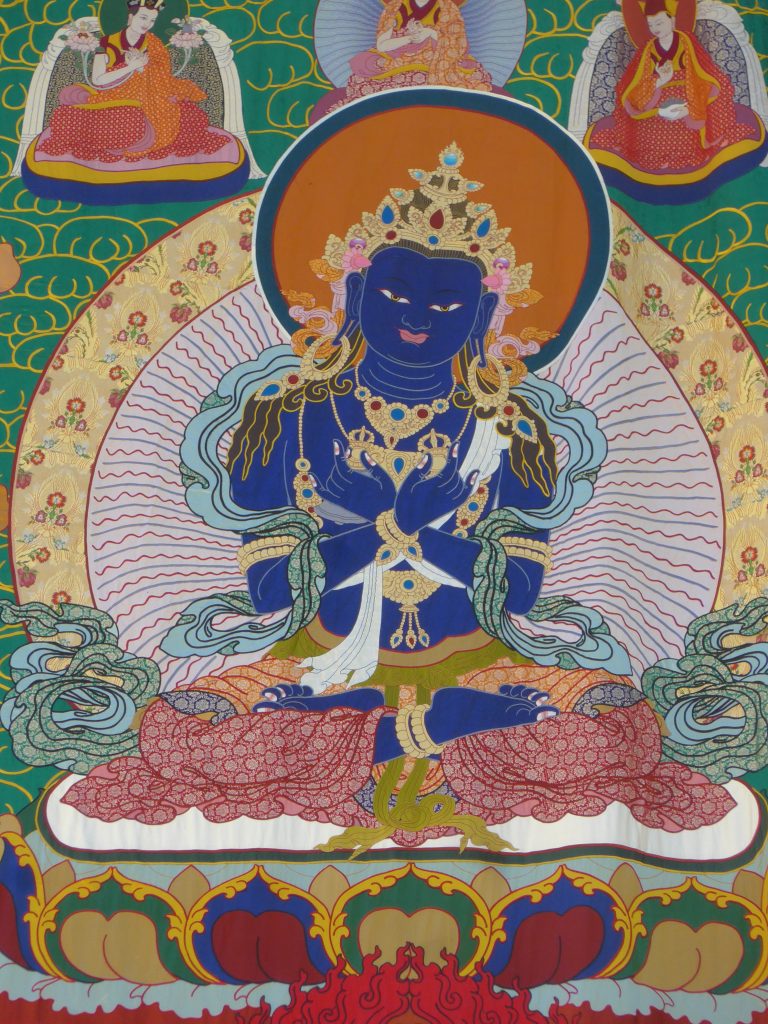
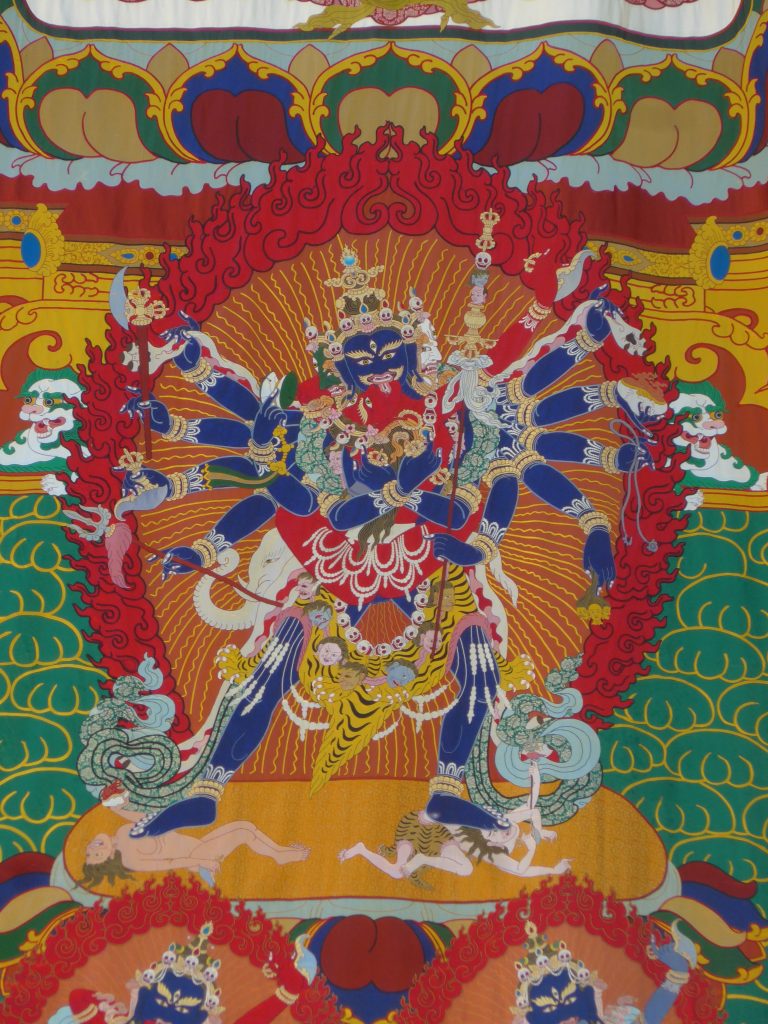
The big event of the day was the Rinpoche dancing. As part of the Sherubtse group, we got to meet the Rinpoche and receive a blessing. We actually met him twice and Zoë and I had our katas put on by him early because we were so confused about what was happening (so we took them off and went around again with everyone else several hours later). He’s very young–though of course not when you take reincarnations into account.
In preparation for his dance, young monks come bearing important ritual items. And one of the jesters (atsaras) carries a basket of burning aromatic branches.

The Rinpoche’s dancing was designed to pin negative forces down into the ground. Any forces of evil would be driven into the ritual torma which was then to be cut and burned, to dissipate those energies fully.
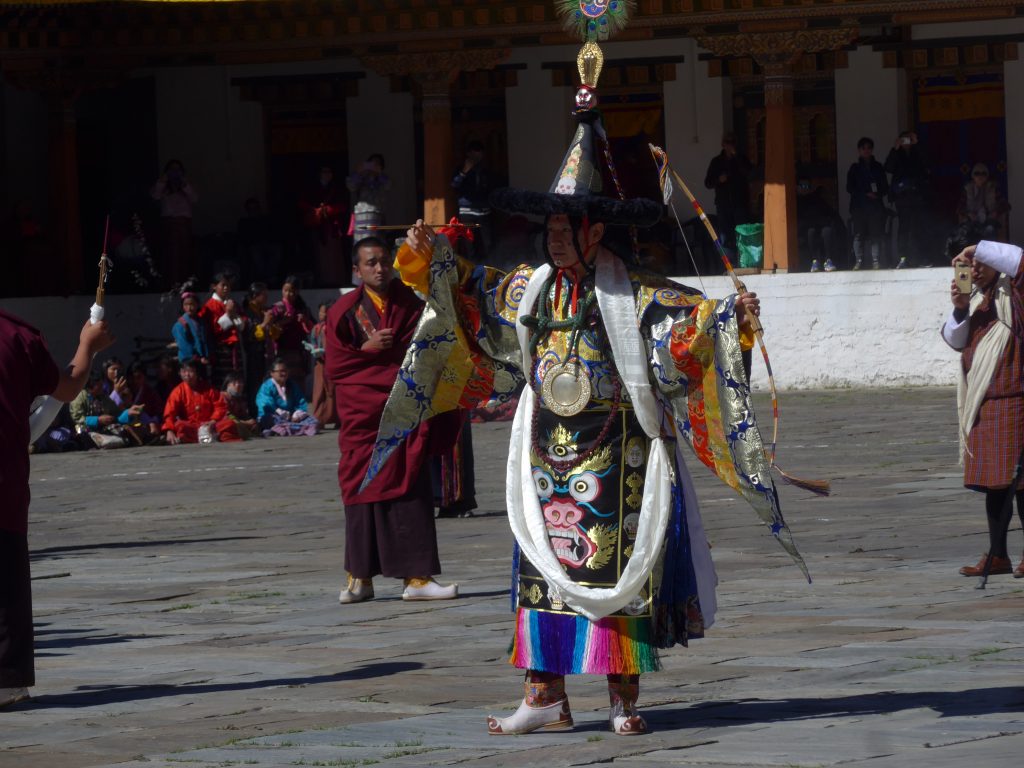
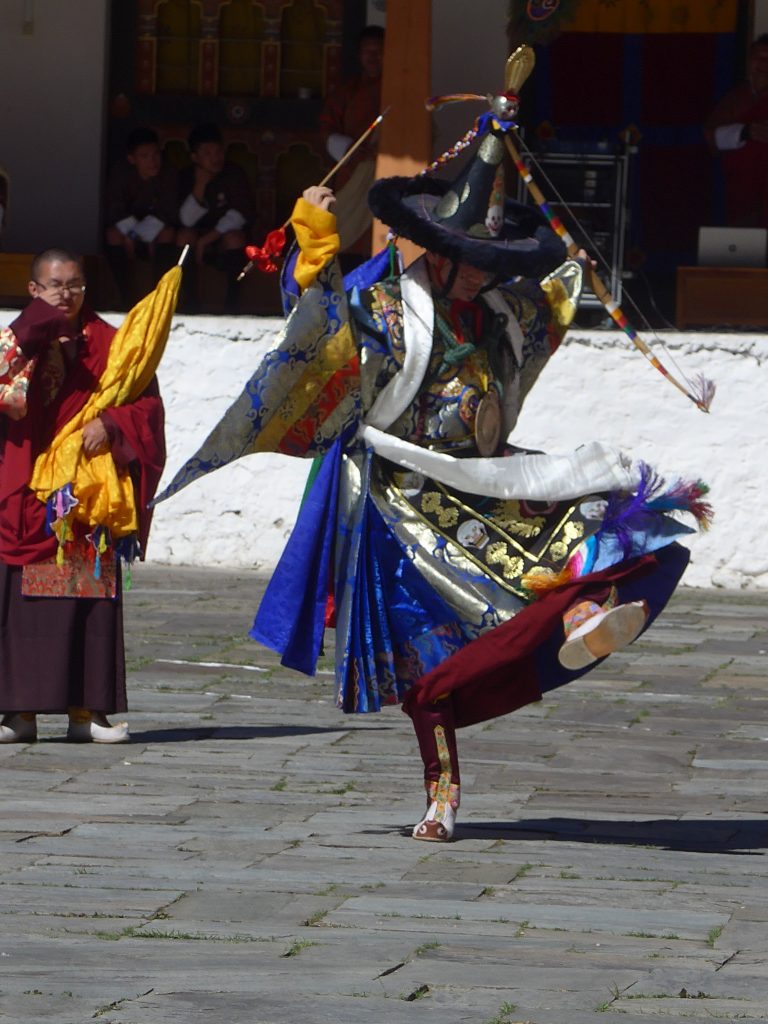
But there were stages to the Rinpoche’s dance, and at various intervals, other dancers would come and perform their own dances in his presence.

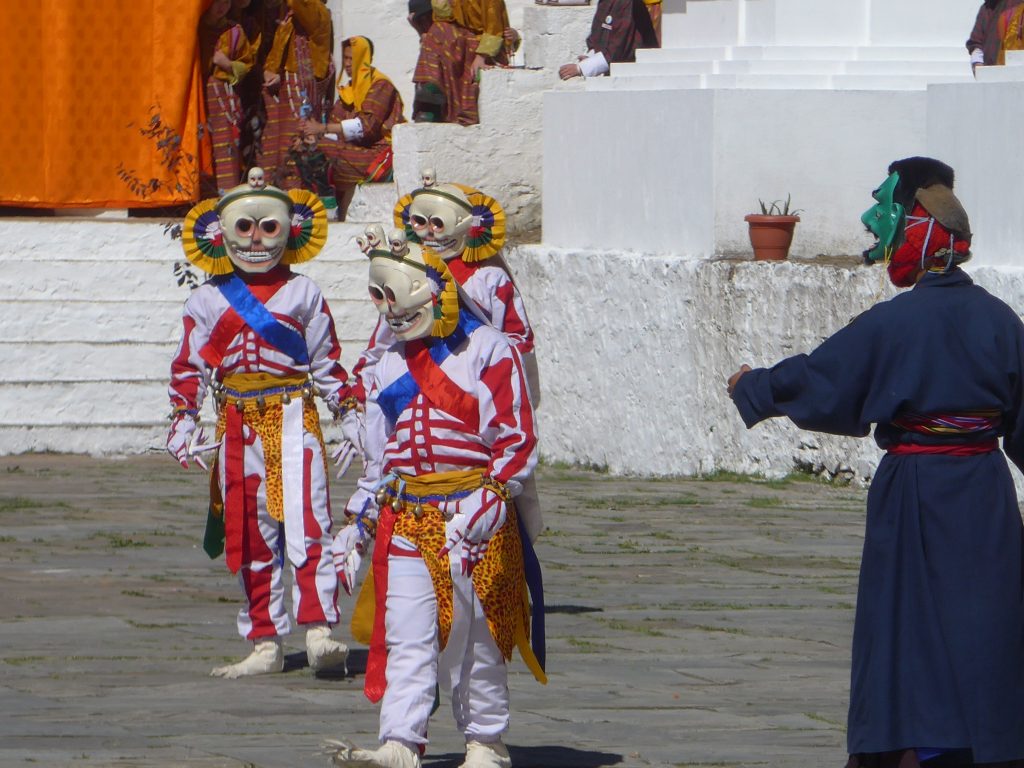
The skeleton dancers were younger boys. Zoë captured the moment when they seemed to explode in dust.
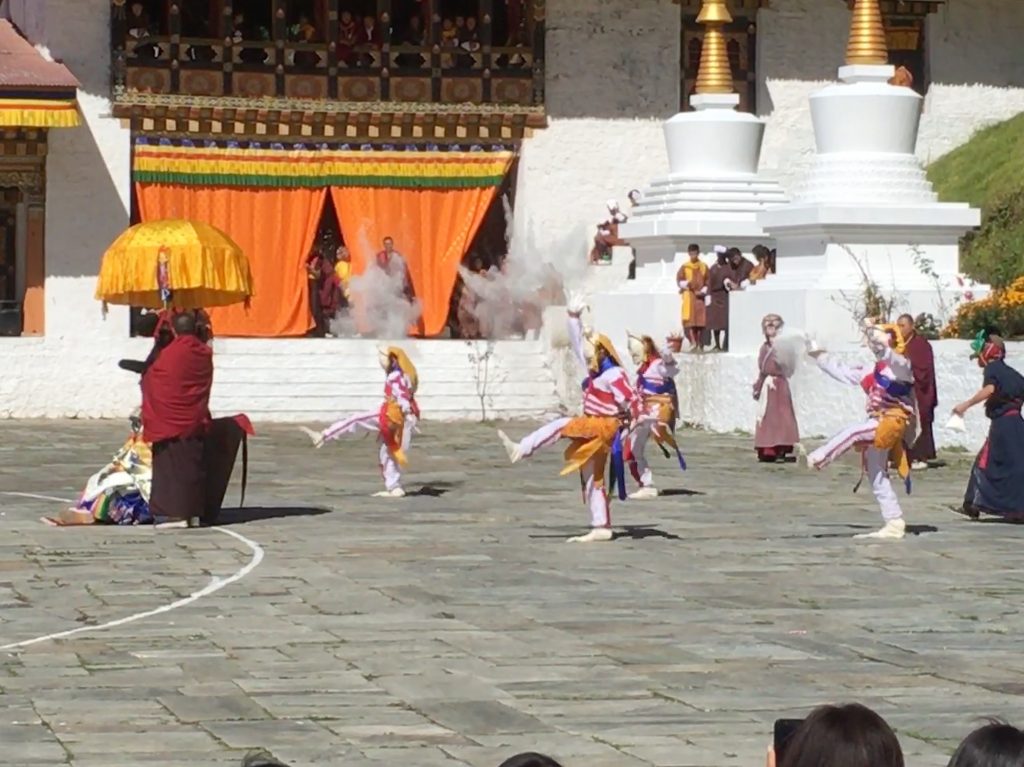
They also did cartwheels and other gymnastics, and they jingled with small bells.
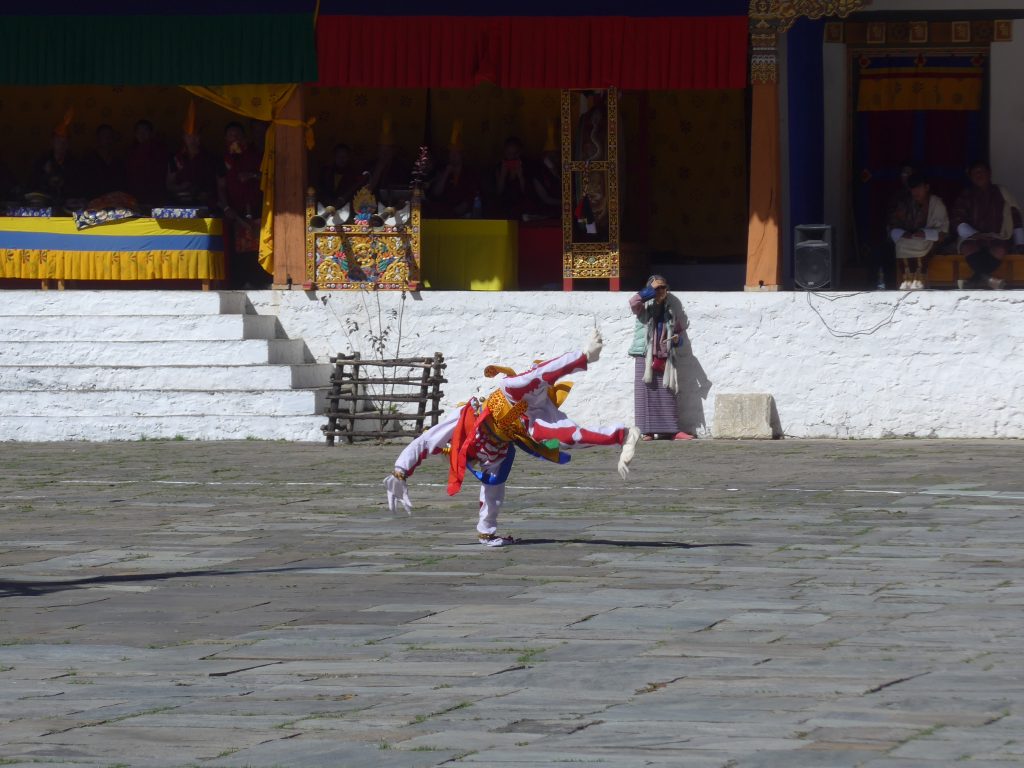
The atsaras–master dancers themselves–staged their own comic play:
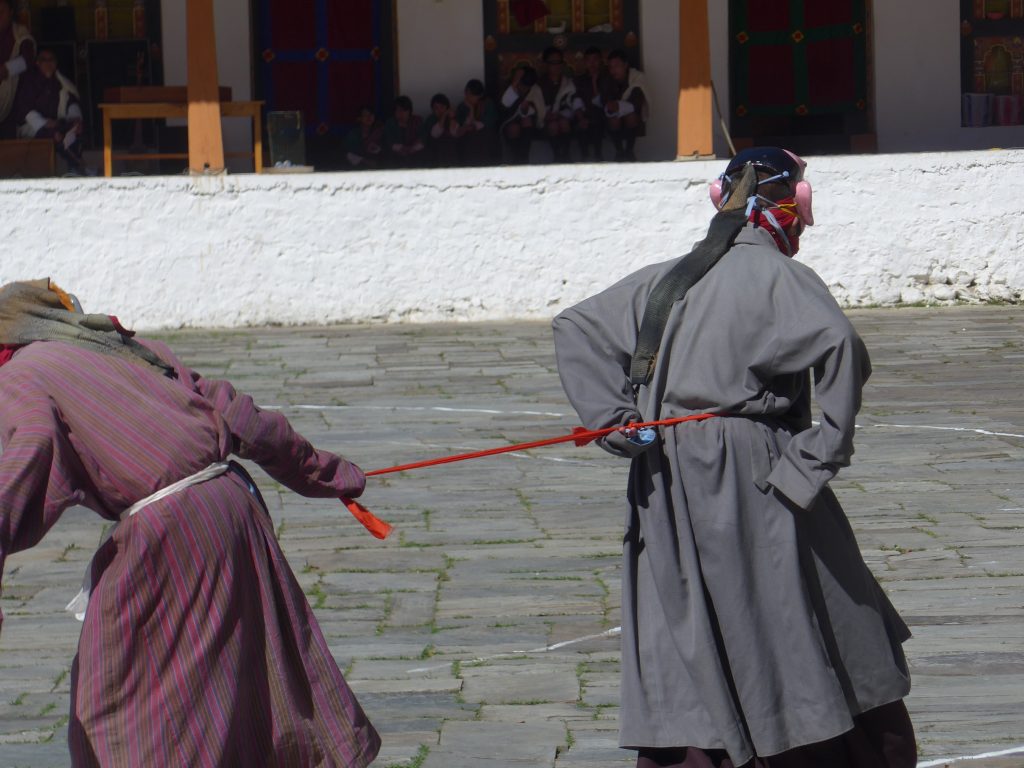
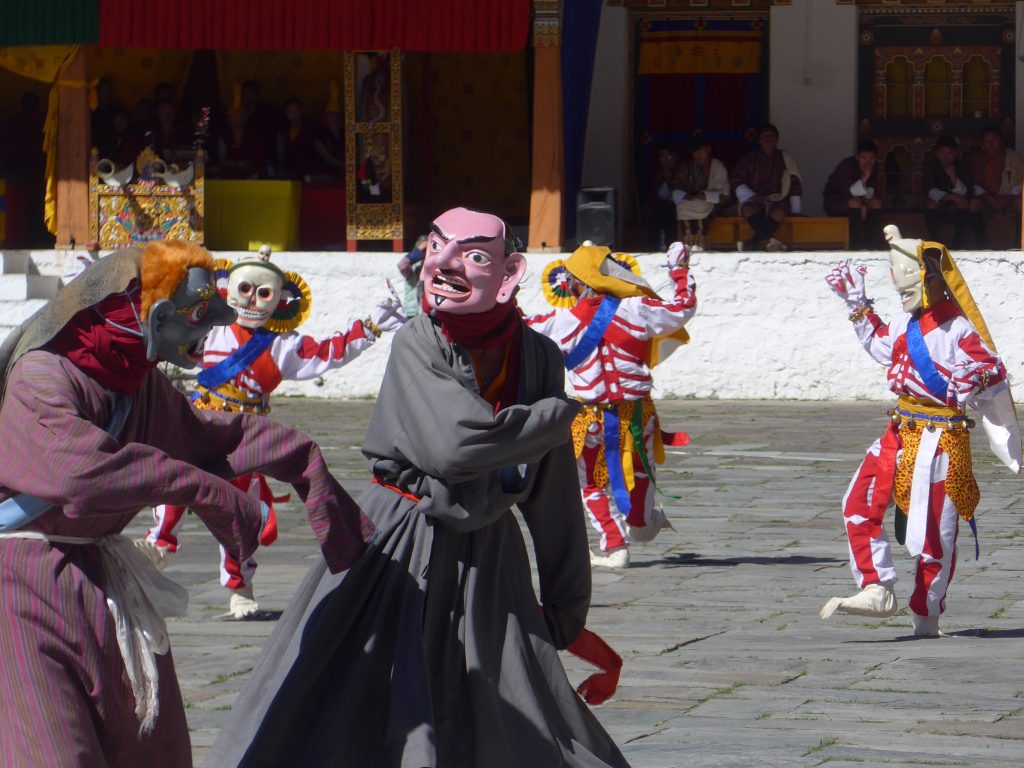
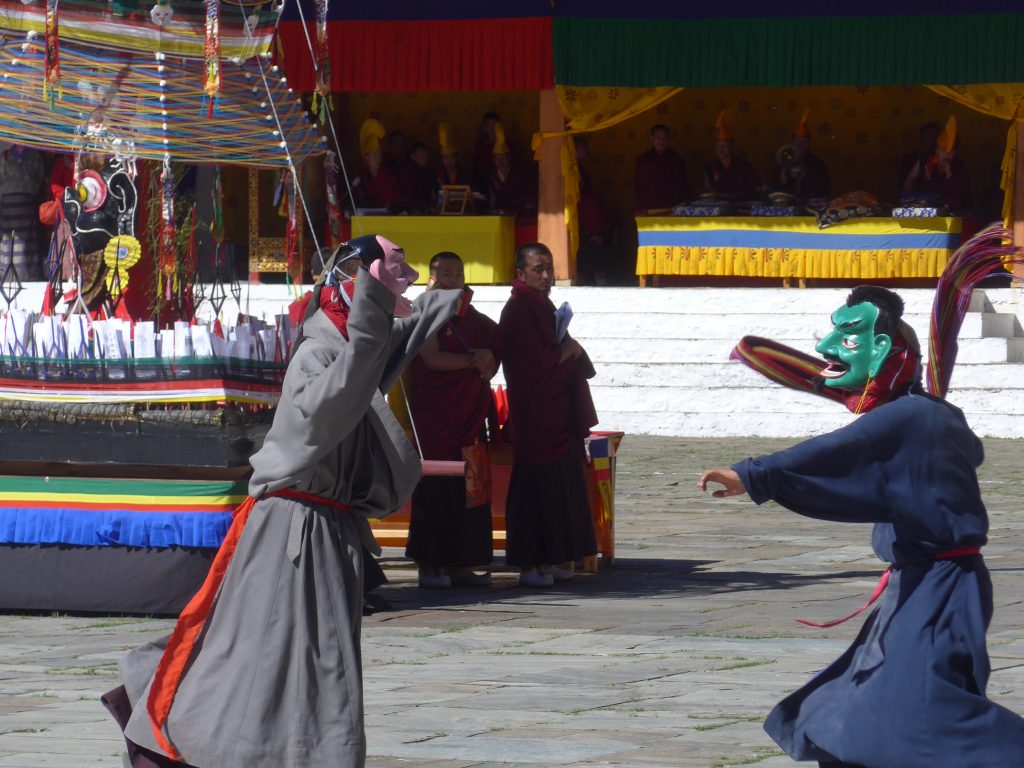
The animal masks came back again, with pairs of dancers (stag and bull) waving swords through the air, to cut through delusion.
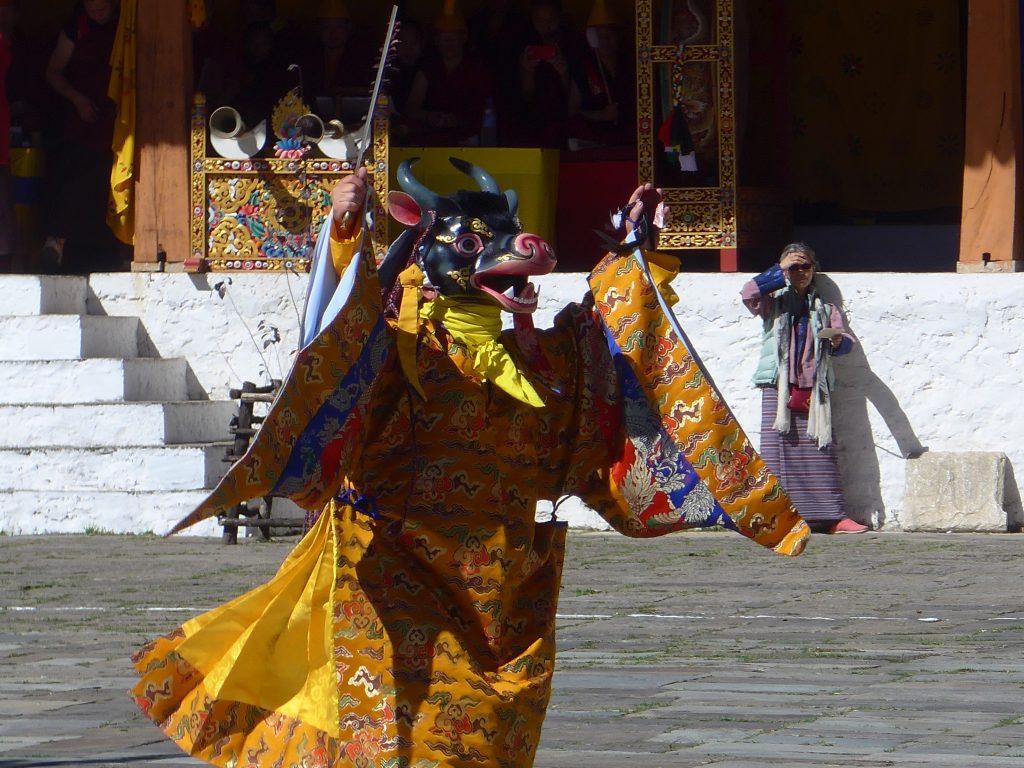
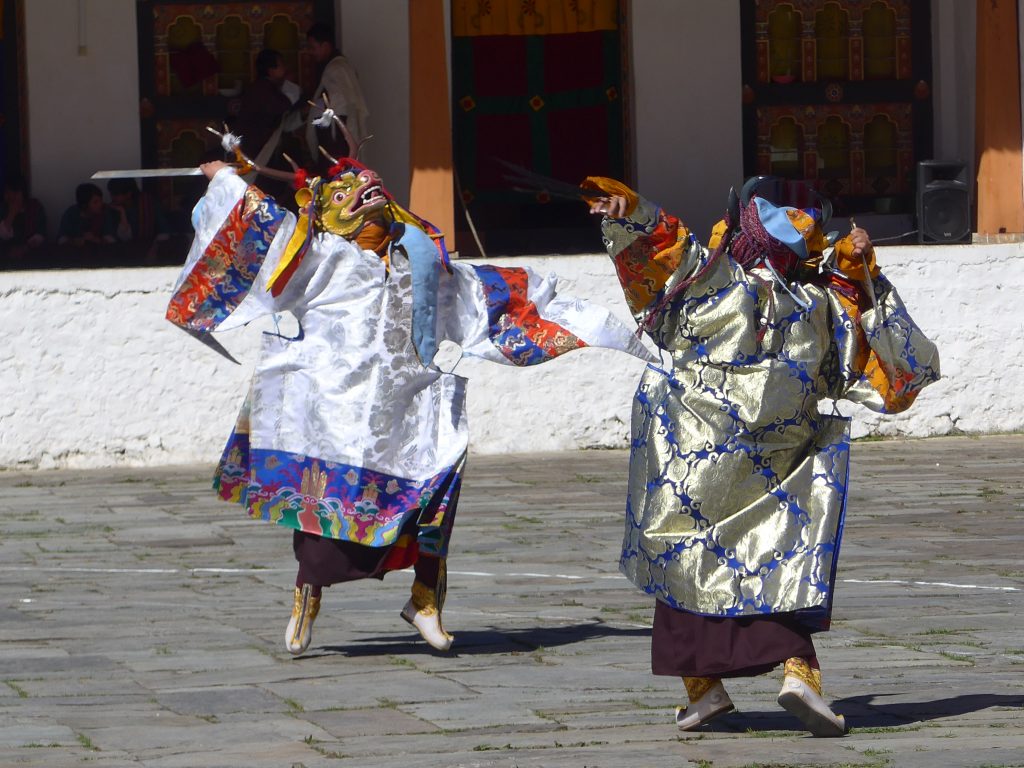
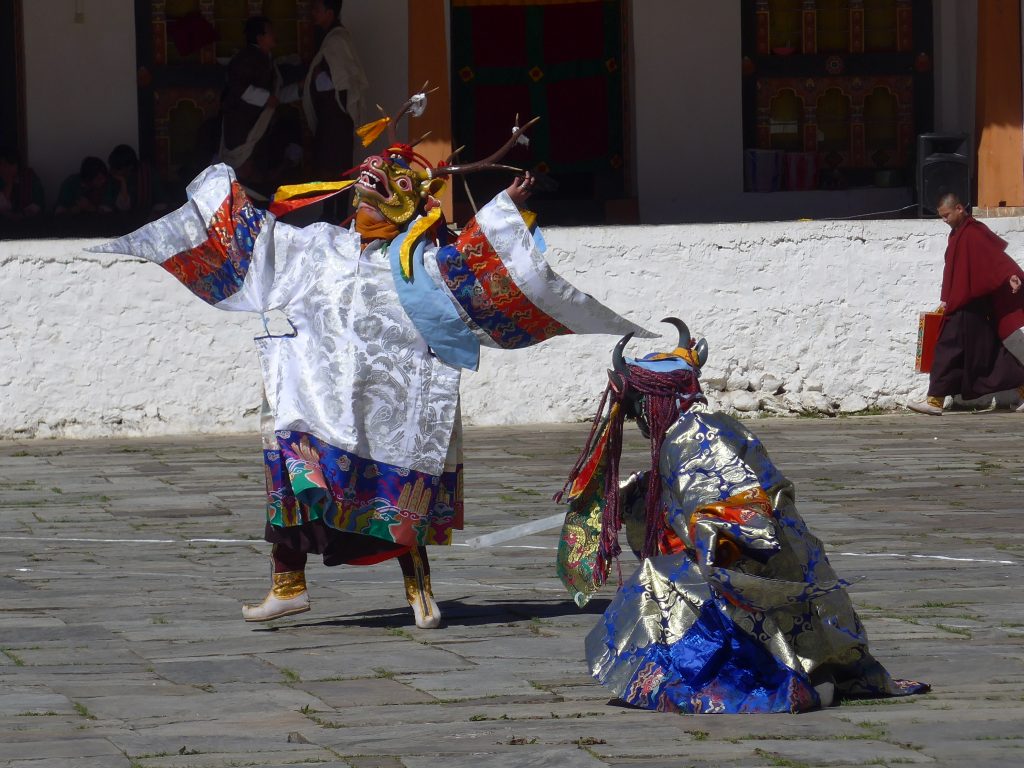
The “wrathful deities” were perhaps the most striking dancers:
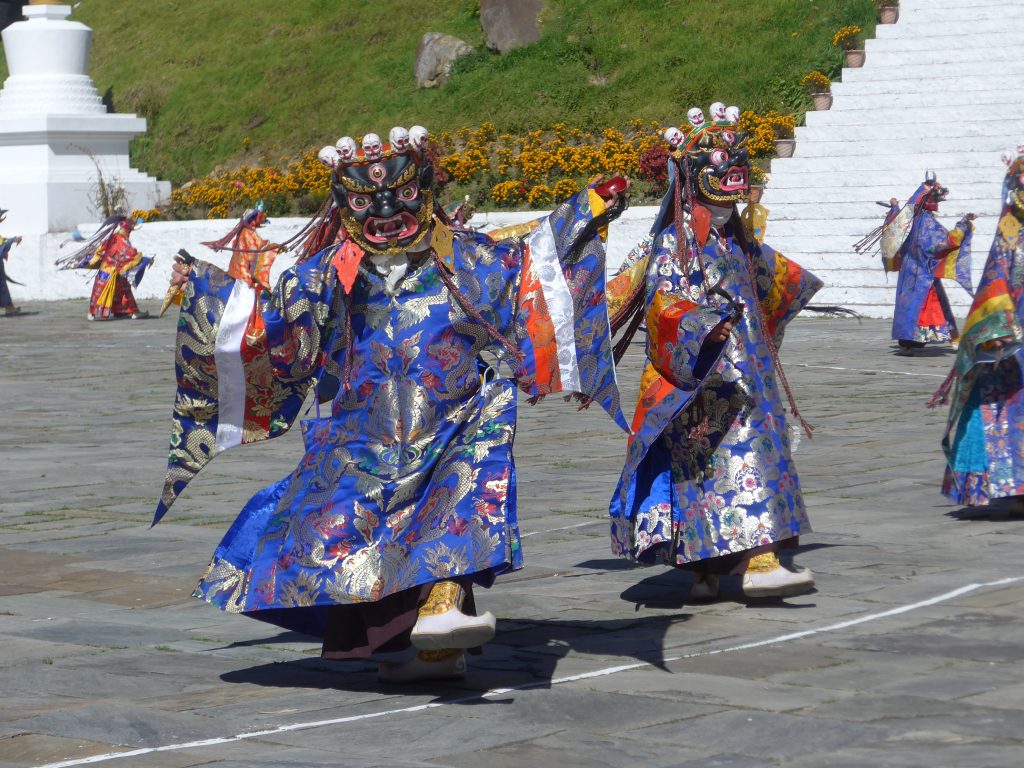
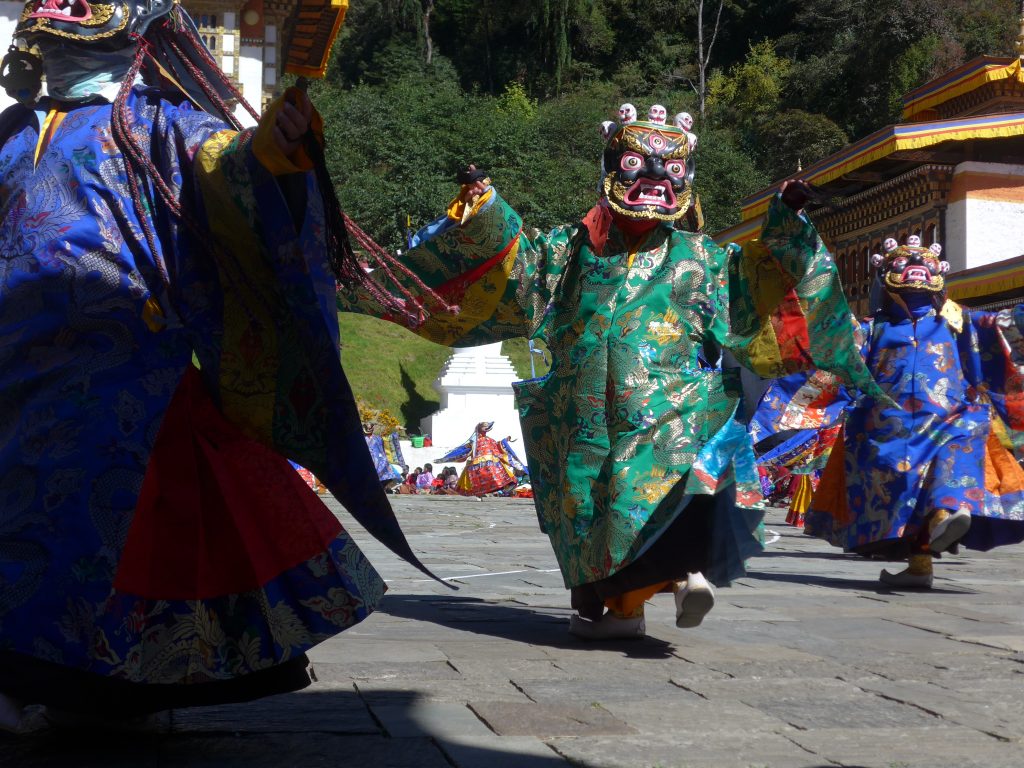
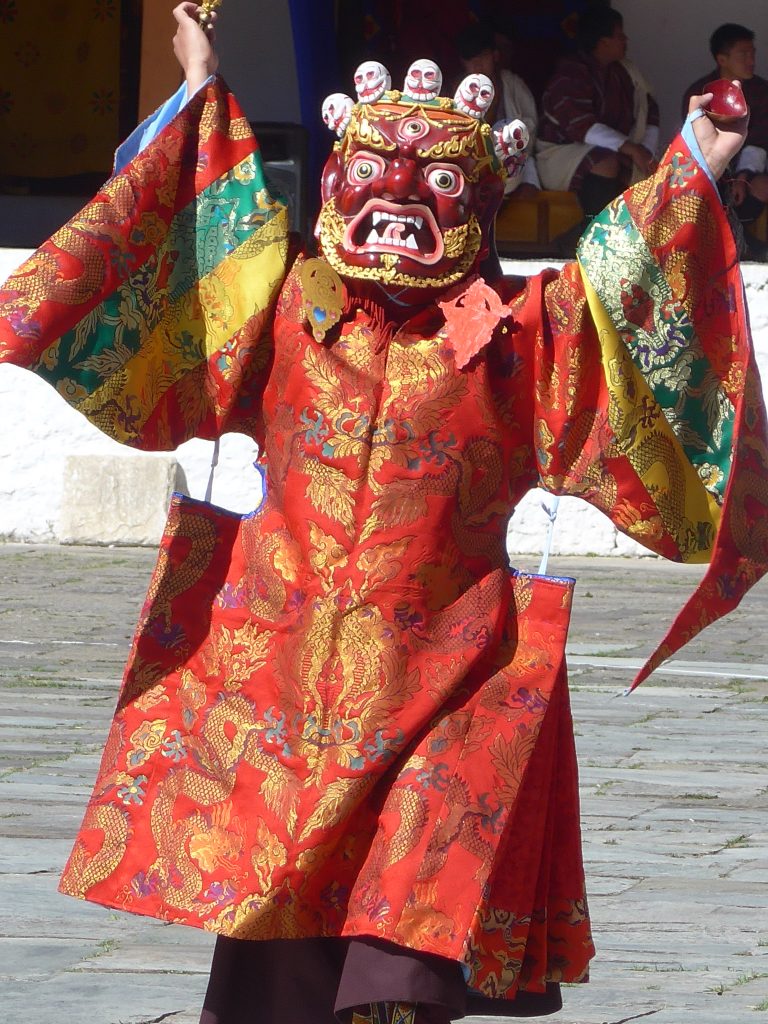
The audience sits close to the action
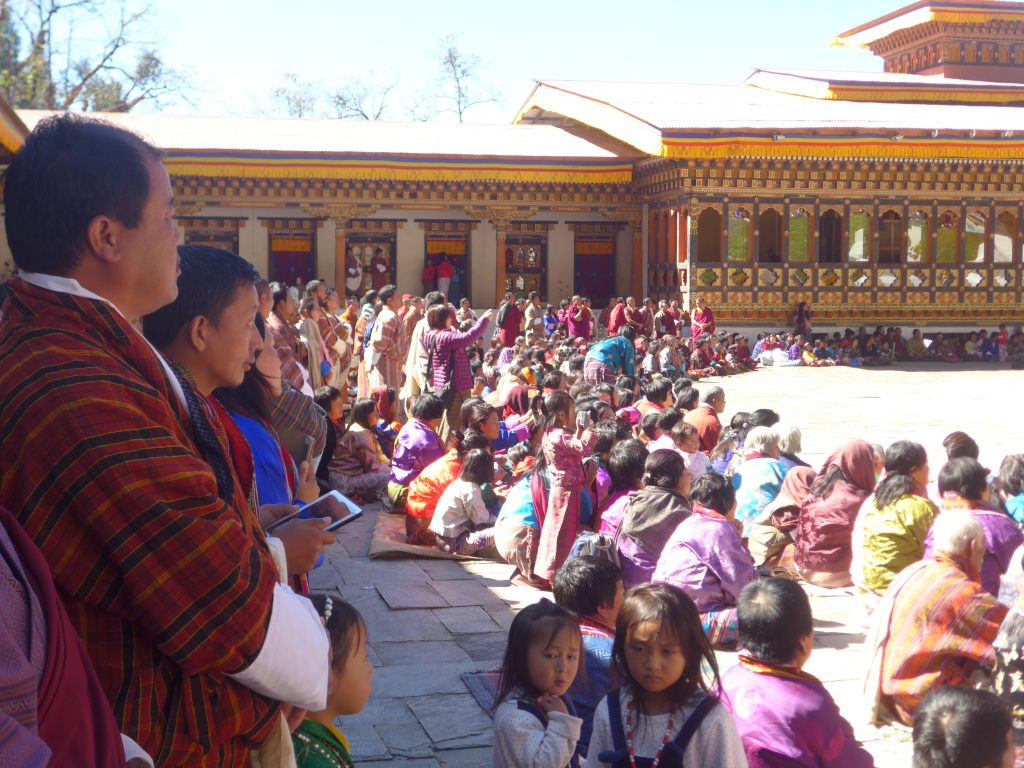
But the monastery had to request everyone to stay (by loudspeaker) until the Rinpoche’s dance was done and the ritual cakes had been burned. We didn’t understand the request (in Dzongkha) and the Sherubtse contingent left early. But this was (by far) our favorite dance of the day:
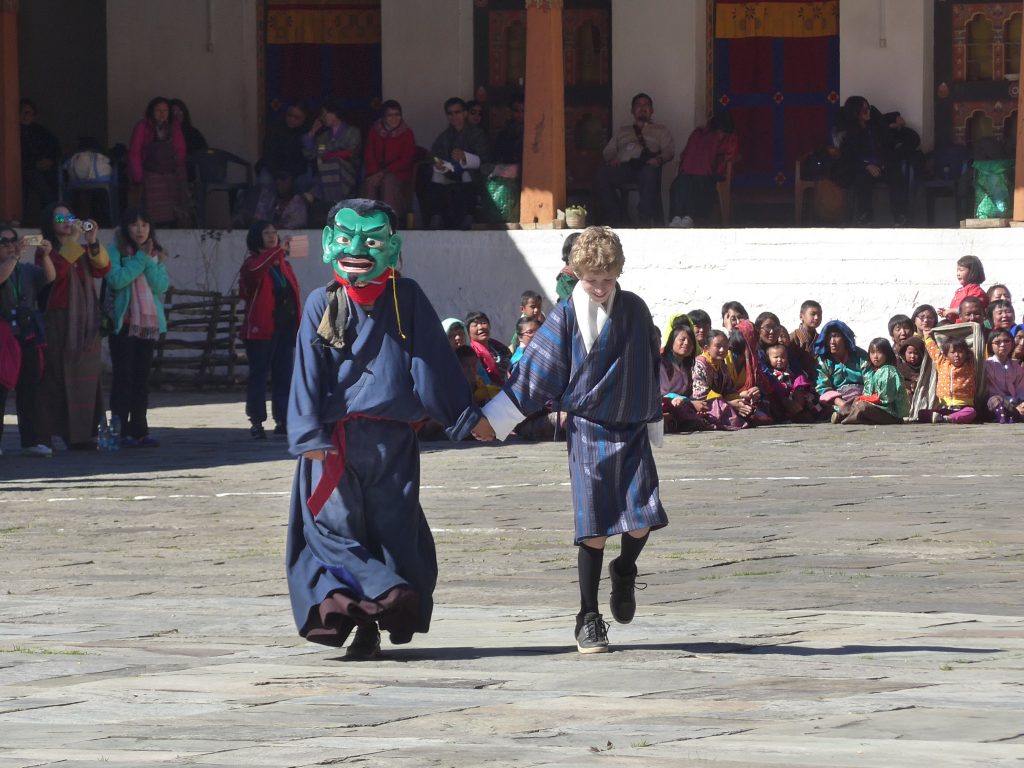
Quite the day, all in all.
